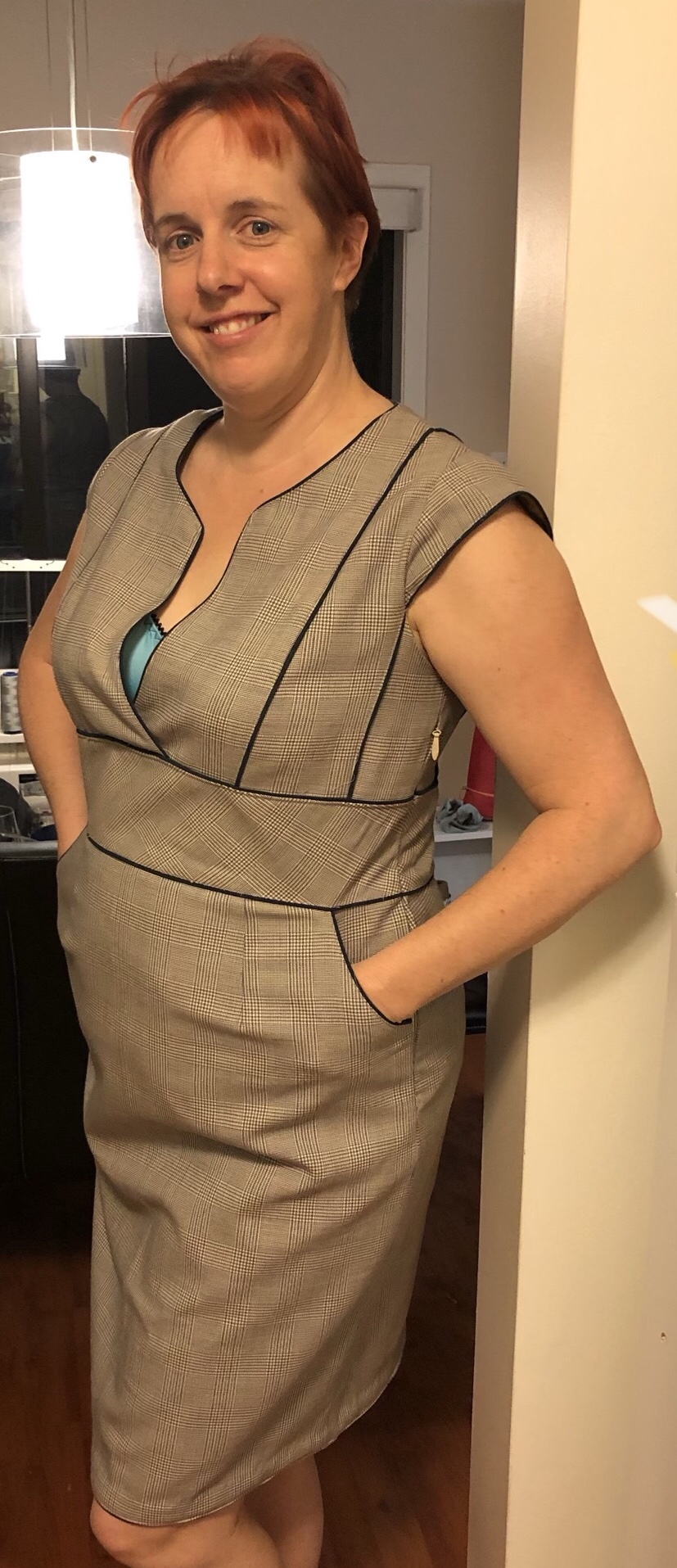I’m not even sure I’m ready to write this blog post, but I want to get a placeholder here and maybe I’ll come back a little later and write again. I feel very conflicted about this dress now that it’s done.
I didn’t write anything last night after I completed the dress, but I did post photos to my various sewing groups on Facebook.
This is one of the most technically challenging garments I’ve ever sewn and it shows that I have skill. That is nice. It doesn’t make me feel better right now.
The good stuff (because I should really include this):
- I did a phenomenal job of inserting the invisible zipper. And what a zipper it is! The wait was worth it, to get a YKK nylon coil bridal size 5 invisible zipper from Wawak Supply. My days of putting crappy Costumakers zippers into my garments are over, I think. This zipper had a cloth tape, which made it so much nicer to handstitch the lining to it, and the cloth also has slight give to it just like the dress fabric does, so there’s no awkward puckering.
- I did a faced hem and inserted piping into the hem. I am glad that I did this because it adds a nice weight to the hem, and a little visual anchoring at the bottom of the dress.
- Working with this wool fabric was very nice. It recovers after seams are taken out, it shapes very nicely with steam, and as much as it caused multiple grey hairs to appear, even the pattern-matching was a worthwhile endeavour. I am ridiculously proud of how well the stripes line up nearly everywhere on this dress.
- Piping is a bit time-consuming to make but it is ridiculously easy, and working with the lightweight wool for piping was great. I love the look of piped princess seams.
The tricky:
- I cut the linings for the hem vent wrong. I needed to have one “innie” and one “outie” but I cut them both as “innies” so I had to add a panel that I sewed on … it looks acceptable to a non-sewing person but I know it’s not as it should be.
- The hem of the dress would have been too short if I had taken the 1 1/4″ hem that was recommended. Instead, I did a 1/2″ hem made possible with the hem facing. As a result, the lining hem is too short for the dress. This is something you can’t see when I’m wearing the dress, but again… I know it’s not as it should be.
- The colour of the fabric doesn’t look very good on me… it’s dull and I tend to go for more warm, saturated colour.
- The back midriff piece is collapsing because it is cut on the bias and it is too long. I ought to have spotted this when I was doing fittings, but also it’s hard to tell on my dress form because the posture is slightly different. There is an alteration I could make to fix this, but I have to be honest: I’m not sure I have the mojo to go back into this dress and fuck with it more.
- The neckline is indecently low cut and falls open. I will need to make a camisole to wear under this.
The bottom line(s):
- I don’t think I will make this Kay Unger (Vogue 1183) pattern again as it is now. This is the second time I’ve made the dress and the front neckline is problematic on both of them. Possibly I might redraft the neckline to something else, if I can fix the issue with the back midriff as well. However, there are countless other patterns with a midriff piece (including at least two Burda patterns in my possession) so I don’t see the point of continuing to struggle with a problematic design. Life’s too short!!
- I learned a WHOLE LOT in the process of making this dress, and demonstrated a lot more patience than I thought I possessed.
It will be a while before I can wear this dress, given the pandemic and all that. I intended to wear it on the day my first piece of policy work made it to the legislative assembly, but that probably won’t be possible because the public galleries will be closed. I’m a bit sad about that, but overall I’m happy to be alive and happy that my friends and family haven’t died. Let’s keep things in perspective! So, maybe by the time I have a chance to wear the dress somewhere I will feel less conflicted about it.

